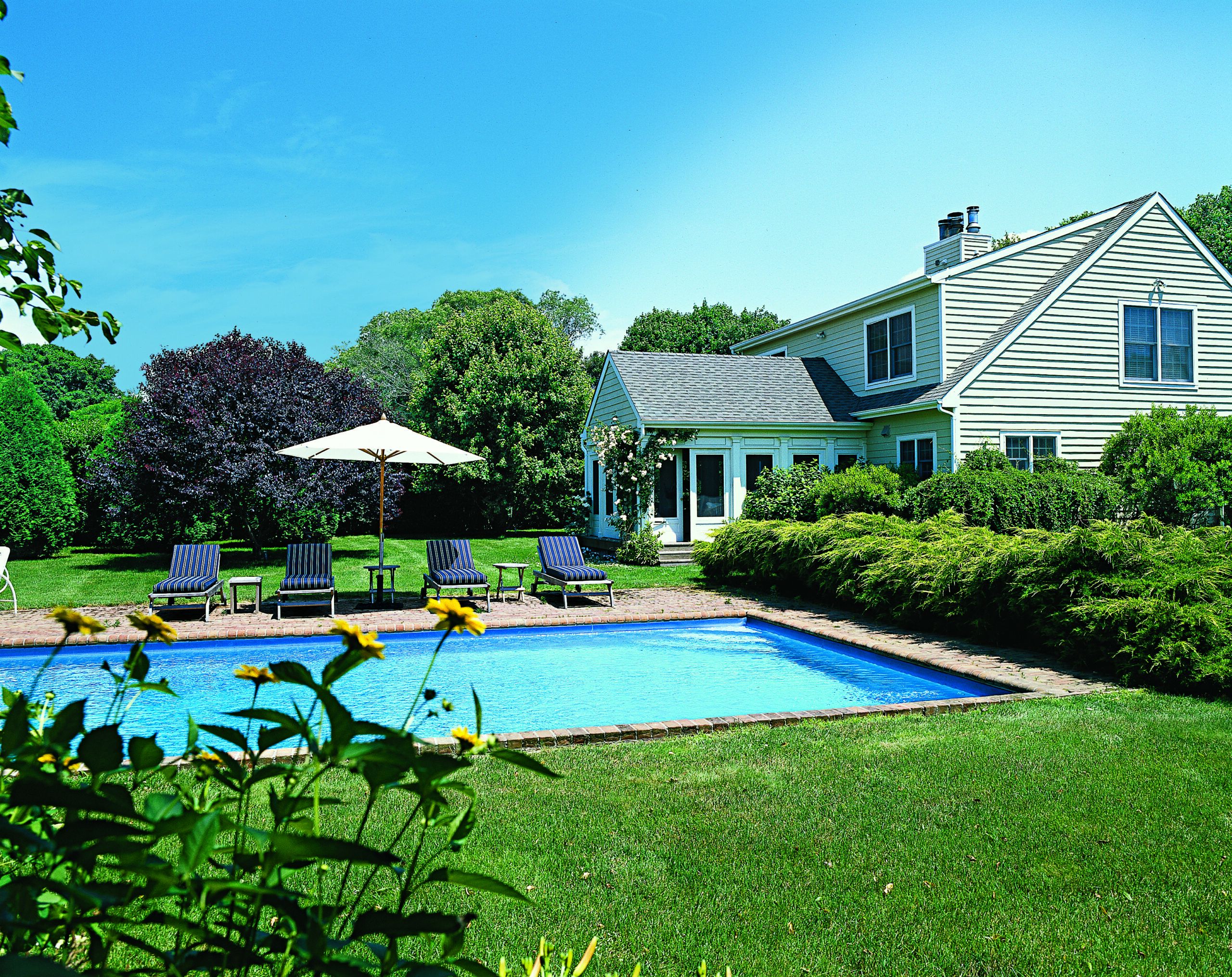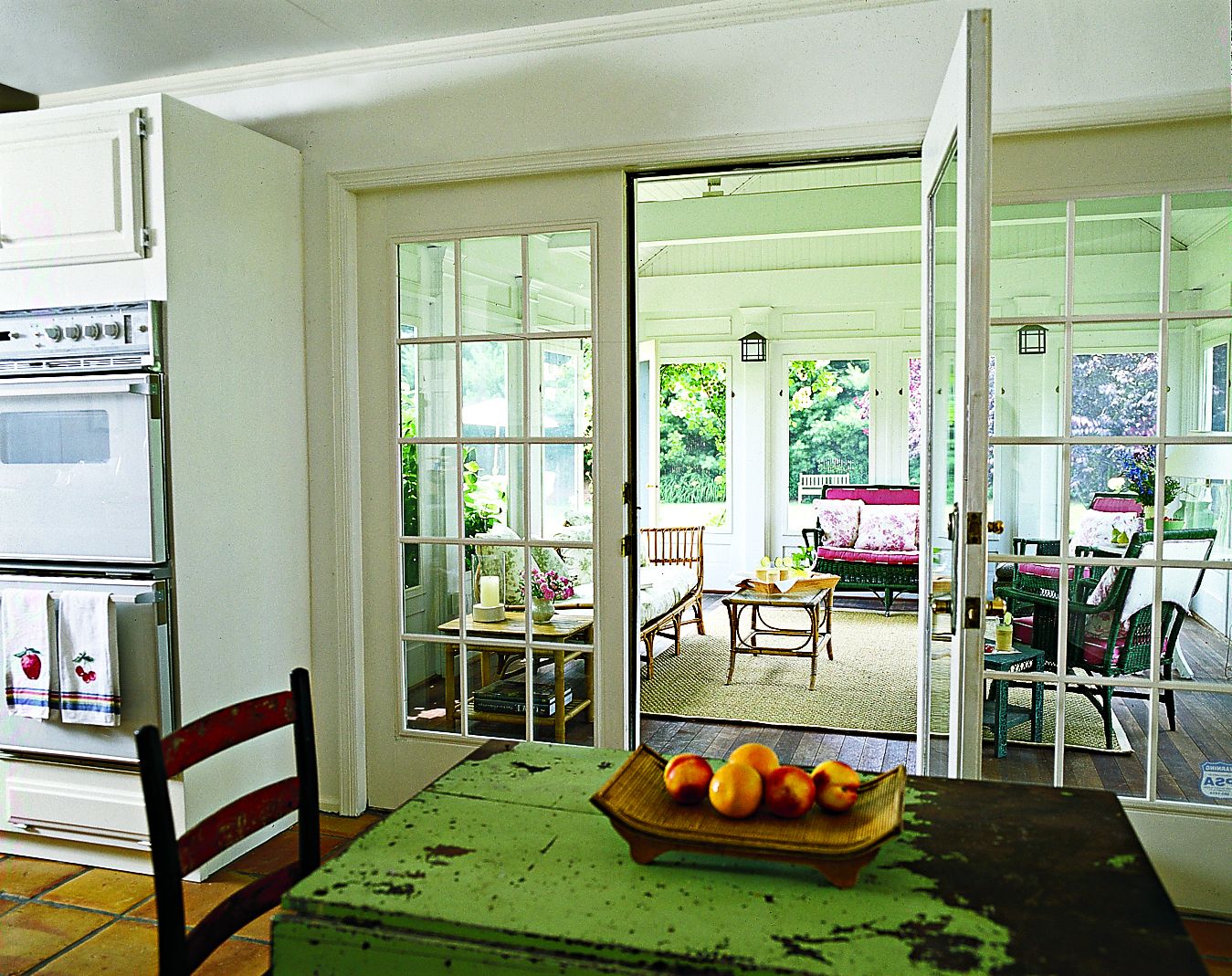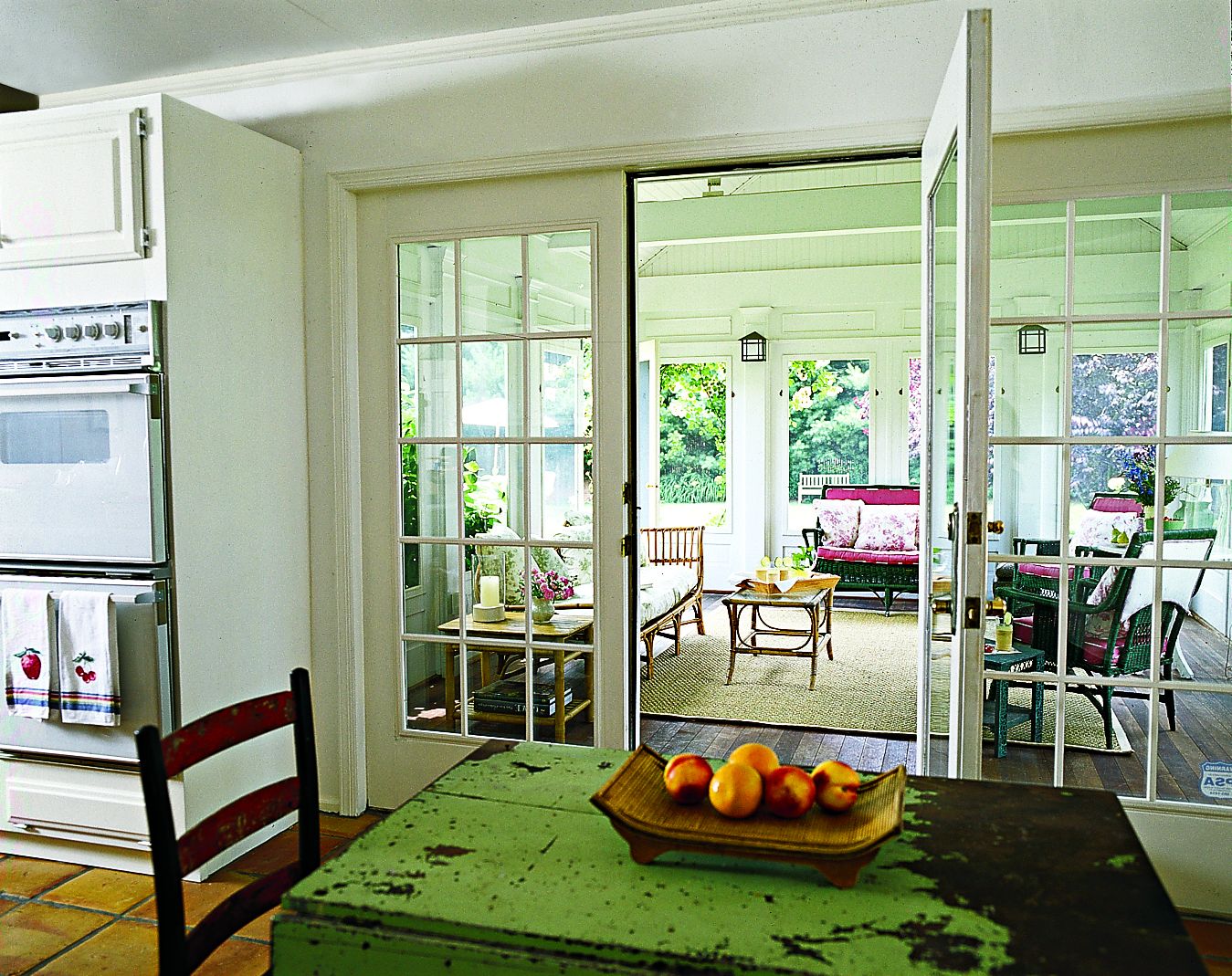
On the border that divides indoor and out sits the screened porch, architecture’s easygoing response to the scorching sun, lightning storms, and biting bugs of late summer. Even one afternoon spent in this iconic place leaves you thinking about how to extend its pleasures beyond the sultry months.
A season-spanning porch was just what the owner of this Cape Cod-style cottage had in mind when she approached local building contractor Guy Clermont. She dreamed of creating a bright, airy room where she could relax on warm May evenings and entertain friends on chilly October afternoons. And as a creative director in the fashion industry, she had definite ideas about how she wanted the space to look: handsome mahogany flooring, whitewashed walls with traditional moldings, panel and pilaster details, and a vaulted beadboard ceiling with exposed beams.
She was also sure she’d never be able to bankroll it all at once. “I was convinced that to do it right, I’d have to build the room in stages over a few years. First the deck, then the peaked roof, then the screening. Then later, maybe add windows,” she recalls. “Guy suggested a way to make the whole thing affordable at once.”
The pro’s advice: Go ahead and build the addition you want but, instead of installing curtain screens and windows, use stock wooden storm doors with interchangeable screen and window inserts as stationary porch panels. When temperatures cool, the panels’ screens can be lifted out and swapped for divided-light inserts of tempered glass, stretching out the porch season along with the available living space.
“With a three-season room, you don’t need to excavate a foundation, install heating or plumbing systems, or insulate the way you do with a year-round addition, so you start saving right there,” says Clermont. Employing stock doors as porch panels cuts the budget one step further, eliminating the need for a lot of extra on-site carpentry and custom millwork. “Basically, you put in piers and girders, frame out the roofline, lay the deck, pop in the doors shiplap-style, and do the finish carpentry—which can be as simple or as intricate as you want,” says Clermont. The idea is not original, the builder emphasizes, but it’s one that makes a lot of sense. “Think about it: I could charge you to build custom-fitted porch screens on-site, or I could measure out the framework to accommodate standard-size wood doors and cut down my labor costs by about a third.”

While many companies around the country make wooden screen doors and porch panels, Clermont typically uses sturdy Ponderosa pine doors handcrafted by CDC (Combination Door Company), a fourth-generation manufacturer in Fond du Lac, Wisconsin. The style he chose for this project in Bridgehampton, New York, even comes with a true-divided-light insert to match the French doors that lead into the kitchen. The inserts are held in place with factoryinstalled thumblatches, “a beautiful thing,” from this man’s point of view, “since it means we don’t have to screw a bunch of hardware into every panel, which can get pretty tedious.” The easily operated mechanism (no tools required) also makes life easier for the homeowner when it’s time to switch out the inserts or remove them for cleaning or repairs.
Situated off the home’s large country kitchen and adjacent dining room, the addition measures 16 feet 6 inches by 19 feet 10 inches and uses a total of 14 doors: a dozen of them stationary, and two hinged and bolted to create a wide double entry. “Guy convinced me to make the room as big as possible, and to jut it straight out into the backyard to expose three long walls to the ocean breezes,” says the owner. Ceiling fans, a smart option for porches with less airflow, are not necessary here, two miles from the Atlantic.
The resulting room is one of the most welcoming parts of the house and has made the whole place feel bigger. “This is where everyone wants to be now—it’s the dining room, family room, and living room,” the owner says. “Even in the dead of winter, when I look out through the kitchen’s French doors, it feels like summer.”

